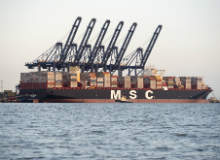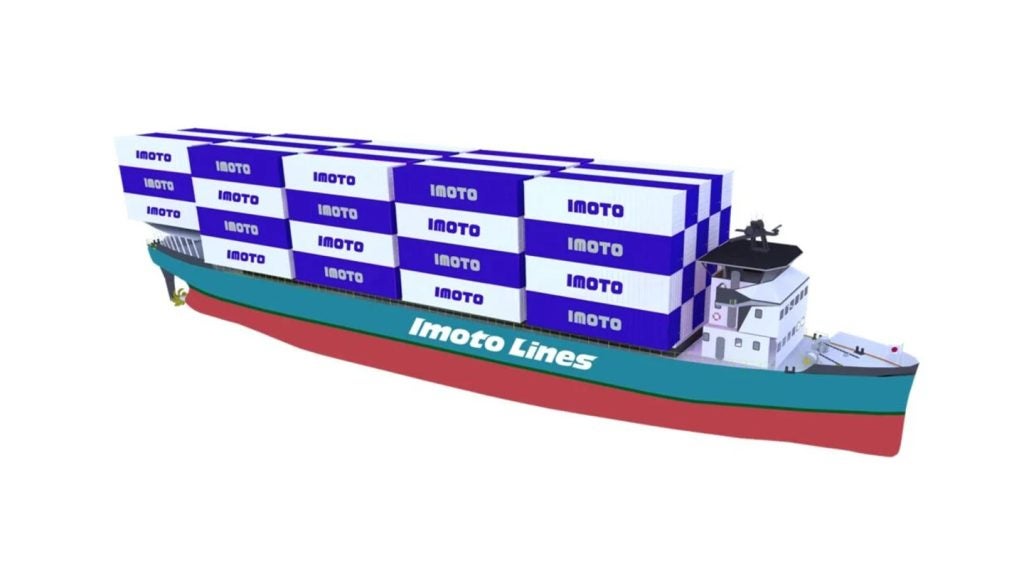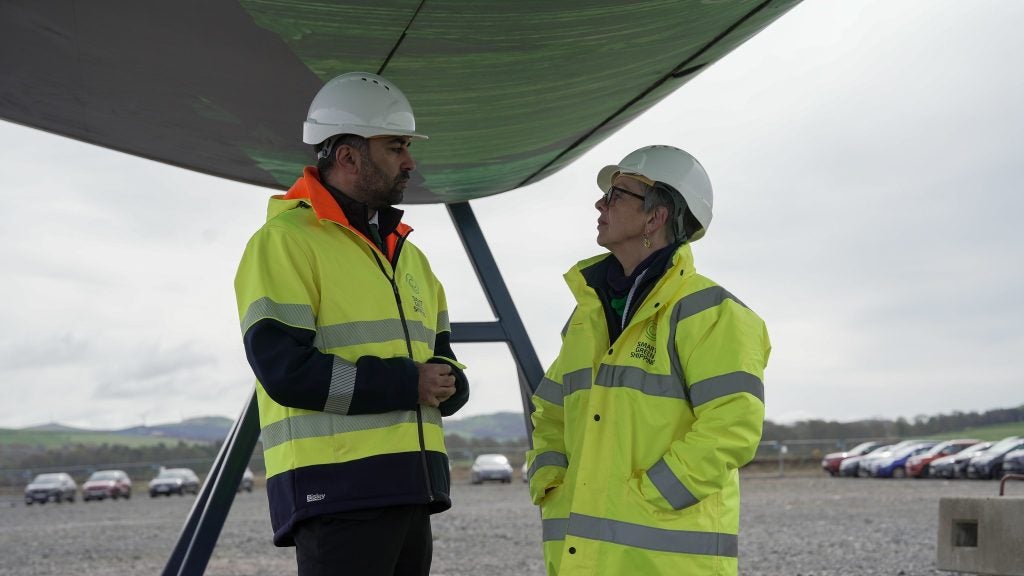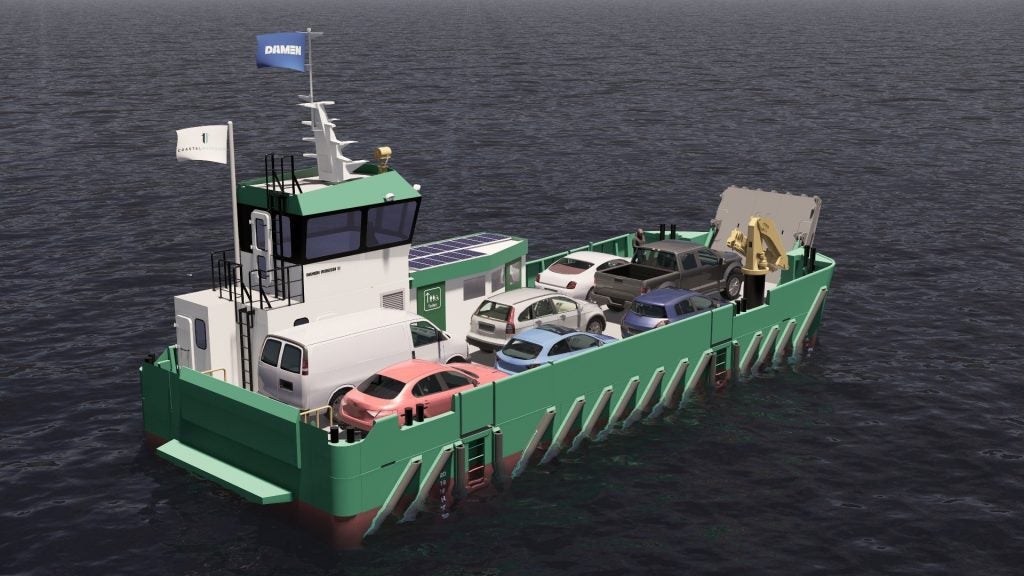
Maritime transportation is in a state of constant growth and fast development. The International Maritime Organisation (IMO) estimates that today, 90% of transport goods travel by sea, as maritime trade represents the most cost-effective way to move en masse goods and raw materials around the world.
Global container trade is believed to account for approximately 60% of all world seaborne trade, according to Statista. Over the past 60 years, container cargo ships have increased 20,000% in size and while continuing this trend comes with caveats, shippers are looking at increasing capacity even further.
In these conditions, it is “unthinkable” to have any ship engines without fitted turbochargers, according to Arie Smits, senior general manager of Global Turbocharging Projects at ABB Turbo Systems.
The Swiss power and automation specialist developed the A100-L turbocharger based on extensive customer feedback, and it has now been fitted to CSCL Globe and MSC Oscar. These two (alongside MSC Oliver) are currently the only vessels with a capacity of over 19,000 TEU.
In a climate of fluctuating fuel prices and ever more stringent environmental regulations, these maritime giants are under pressure to perform at low costs and meet green standards. At the moment, ABB’s series of A100-L turbochargers help these ships achieve just that.
But as plans to launch the next generation of 24,000 TEU ships are under development, what role do turbochargers play in helping the shipping industry further expand its fleet while conforming to ever-stricter environmental standards?
How well do you really know your competitors?
Access the most comprehensive Company Profiles on the market, powered by GlobalData. Save hours of research. Gain competitive edge.

Thank you!
Your download email will arrive shortly
Not ready to buy yet? Download a free sample
We are confident about the unique quality of our Company Profiles. However, we want you to make the most beneficial decision for your business, so we offer a free sample that you can download by submitting the below form
By GlobalDataIMO’s Tier III regulation: new emission standards change the game
The IMO Convention has been overseeing ship pollution since it first became active in 1958, when it began enforcing the necessary emission standards for nitrogen oxides (NOx) and sulphur oxides (SOx) at sea.
At the start of 2016, the regulation will be tightened for the first time in five years with the introduction of IMO’s Tier III emission standards. The new rules will apply to marine diesel engines built on or after 1st January 2016 travelling across the North American Sea and the United States Caribbean Sea. They are four times stricter than the current legislation and will require ships to drastically reduce their NOx emissions – which means operators are likely to require specialised pollution reduction technologies onboard their ships.
The Marshall Islands’ unsuccessful call for a global shipping emissions target has reignited the debate on the sector’s eco-performance.
By default, turbochargers are already an energy-efficient technology. By using the exhaust gas to drive a turbine and push extra air into the engine’s cylinders, a turbocharger effectively allows the engine to run at higher powers with less fuel.
But ABB’s series of turbochargers are specifically designed to be fully Tier III compliant, in anticipation of the new legislation. According to Mediterranean Shipping Company, the makers of MSC Oscar, the ship’s A180-L turbocharger helps it consume 35% less fuel and therefore produce less carbon dioxide, making it “the most efficient vessel on the planet”.
ABB’s turbocharger also makes use of exhaust gas recirculation (EGR), a technology which, if used in combination with other emission-cutting systems, can reduce NOx by 50% to 60%.
“A turbocharger has essentially three main parameters: there’s the volume flow, efficiency and pressure ratio,” Smits explains. “The turbochargers will play a continuously big role in Tier III emissions, because they have the EGR turbo.”
“With the current market situation, we see a lot of de-rating of the engines. So they are rolling in a lower output of speed – the high speed of these vessels is gone. They are not running at 24 knots anymore.”
Over the past few years, containership speeds have peaked to an average of 21 to 25 knots, according to the Geography of Transport Systems database. With energy consumption impacting on speeds, a new “slow steaming” trend has developed amongst cargo ships.
The transportation database notes that “slow steaming will involve lower operating costs per day, but will add additional shipping days, particularly over long distances”. Regardless, “many shipping lines are opting for slow steaming to cope with higher bunker fuel prices and overcapacity. The deployment of a class of fast containerships has remained on the drawing boards because the speed advantages they would confer would not compensate for the much higher shipping costs.”
Smits says engine de-rating is a form of optimised slow steaming: “Slow steaming is happening because the fuel consumption of the ship’s engine is exponential with the speed. So if you can go down by just two knots, you already go down to half of the fuel consumption”.
Pushing for greater capacity in the pursuit of greater economies of scale
But energy conservation is not the only aim within the shipping industry. The principle of economies of scale is fundamental to the economics of maritime transportation as the larger the ship, the lower the cost per unit transported. Similarly, using larger container ships on board of larger vessels, lowers the cost per TEU carried.
ABB notes that the cost of transporting one TEU for a day by sea costs just over $12 for a ship of 12,500 TEU capacity and only over $10 for an 18,000 TEU capacity ship. When Prelude FLNG launches in 2017 with a capacity of 24,000 TEU, this price is expected to drop to just $9.57. Therefore, the planned 24,000 TEU ships would offer 23% cost savings per day per TEU, compared to a smaller 12,500 capacity vessel.
The incentive of advantageous economies of scale in the 1980s endorsed building increasingly larger containerships, leading to a “virtuous circle”, as described on the database, compounding larger volumes and lower costs. But now, while ships grow in capacity, their size and their engines will not necessarily undergo the same transformation, Smits explains.
“There are two ways of looking at TEUs of the ships. Either look at the maximum load to a container, or the slot positions. And we are talking about slot positions,” Smits says. Each vessel now has anything up to 23 rows of containers on board.
“At the moment there are plans to deliver 21,200 TEU ships which are already bigger than the Global and Oscar. But you won’t even see the difference between the 21,200 and the 24,000 TEU ships because it would mean just an extra row of containers. So the vessels will not necessarily be bigger.”
Since the engine stays the same size, the turbochargers will not need any reconfiguration to be able to serve even the future 24,000 TEU ships.
“I think up to 24,000 TEU will be more or less the limit for the next ten years. We are talking about 400m long, 69m wide – they are pretty big ships. And the limit is not so much concerning the ship but the infrastructure on its course.”
Turbocharging economies of scale
Accommodating bigger ships is becoming a pressing issue. Even after the expansion of the Panama Canal, expected to open in 2016, the world’s currently biggest ship, MSC Oscar will not be able to squeeze through. Moreover, many ports will not have the necessary infrastructure to cope with mammoth containerships, thus severely limiting the number of commercial options for shippers.
Propelled by a mix of wind and LNG, the Vindskip is a new vessel concept already making waves across the shipping industry.
“As long as [the ships] stay at 23 rows wide, 24,000 TEU is possible. But for larger ships, I don’t think it would be possible because of the maximum capacity of the cranes and the ports,” Smits says. “So if you want to go further with a ship’s capacity, the whole infrastructure has to be adjusted and I don’t think this will happen for the time being.”
As a result, the transportation database specifies that “further economies of scale in maritime shipping are unlikely to unfold within the foreseeable future, or at least would come at a high cost.”
This, however, doesn’t influence the market for turbochargers, as ABB can “turbocharge any size of engine”, according to Smits. “In the end if we need more, we can just add one more turbocharger, not necessarily make a bigger one. Most of the engines now have three turbochargers.”
While there is still some uncertainty as to whether ships will continue to grow in size, one thing is certain: in today’s economic climate, the race for cheaper, more efficient marine transportation will intensify, and ABB plans to stay ahead of the game. “As a global market leader, which we have been for many years, ABB Turbocharging will continue to focus on developing products that have the highest efficiency and support the lowest fuel consumption,” Smits says.






